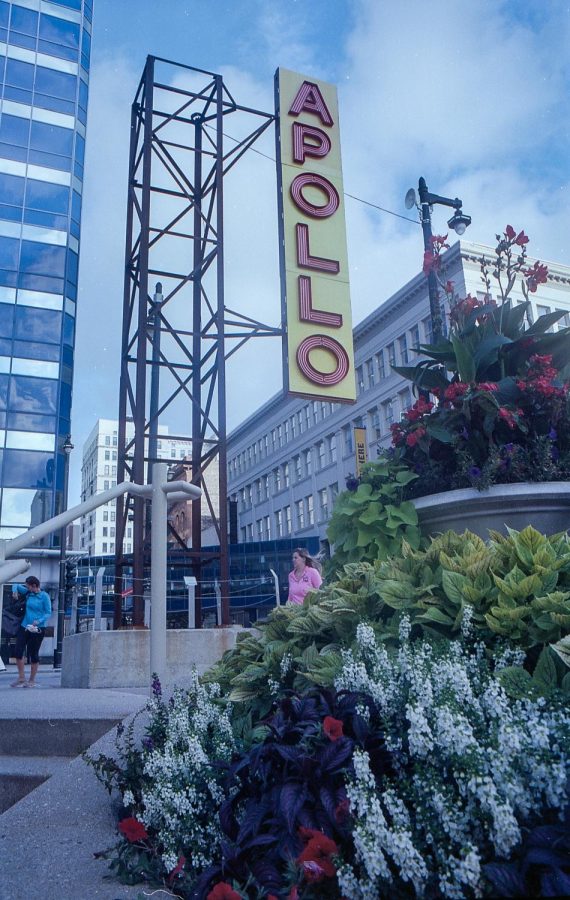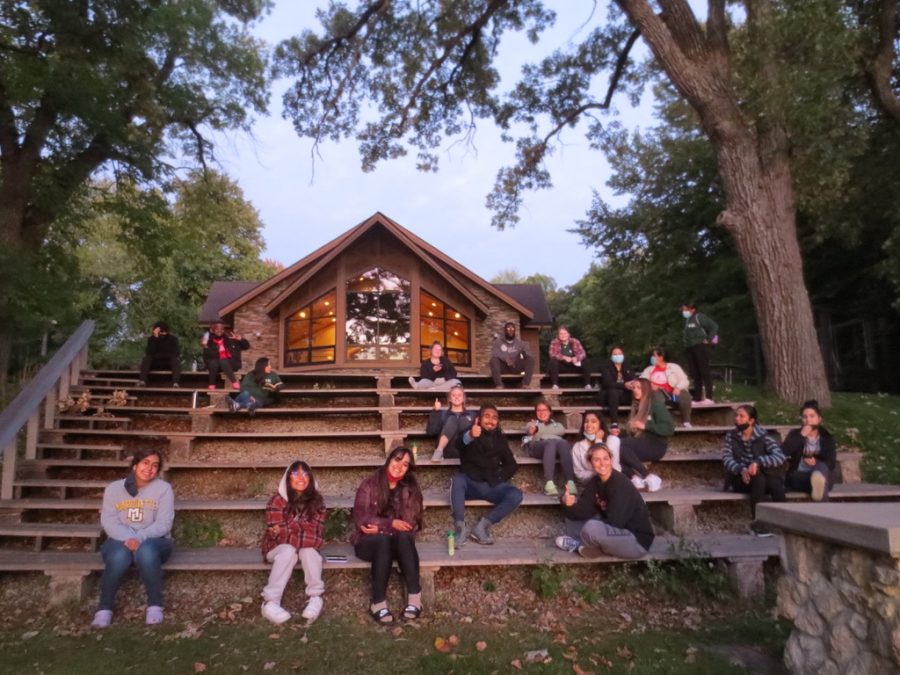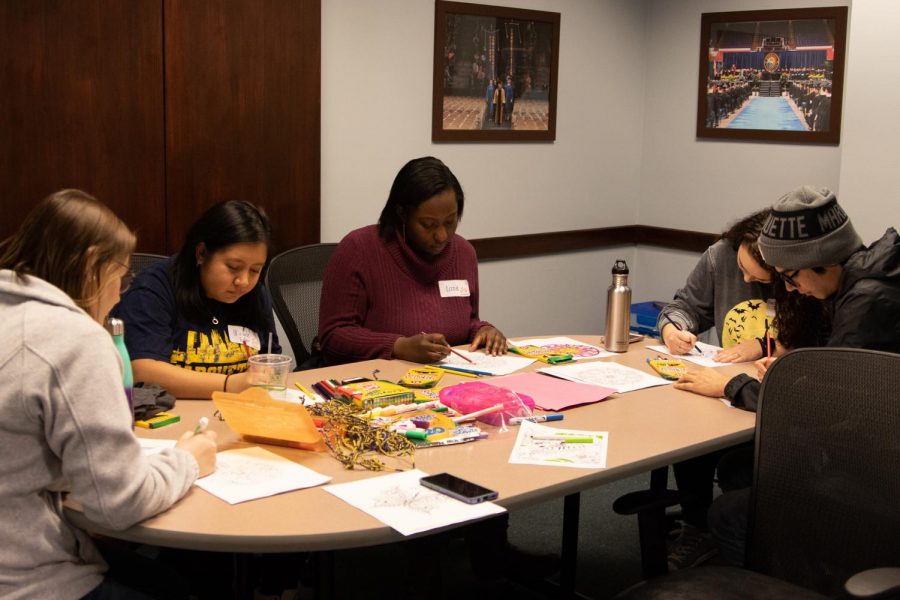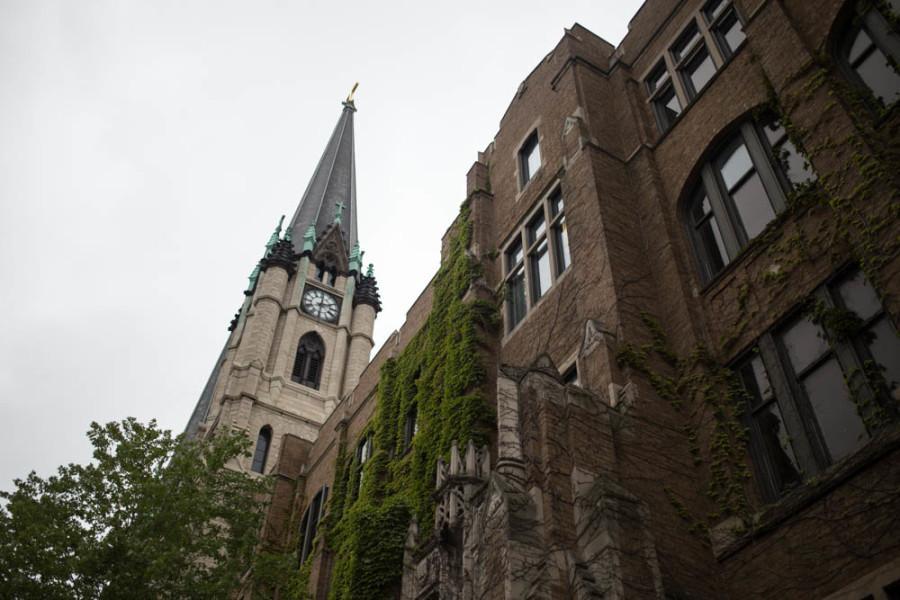Milwaukee. To some it is recognized as the land of cheese curds, but to about 590,000 people, Milwaukee is home, and Wisconsin Avenue is the spine that holds the Cream City together.
The avenue stretches from the coast of Lake Michigan into the suburbs of outer Milwaukee, spreading the rich history of Milwaukee through food, architecture and the city-lovers.
Kelly Walker, director for the center of community service at Marquette, said when you arrive to campus you become engrossed with the area.
“When you come to Marquette as a student, Milwaukee is your home,” Walker said. “You’re not just coming to the university, you are also a member of the community. You are a part of the fabric that makes the city.”
Milwaukee was first inhabited by the Potawatomi nation and used as a wild rice marsh. The land was set upon a 50-foot bluff that overlooked the Milwaukee River.
Solomon Juneau, a French-Canadian fur trader, came to the area in 1818 and, according to John Gurda, author of “Milwaukee: City of Neighborhoods,” Juneau and his wife, Josette, opened a trading post on what is now the corner of Water Street and Wisconsin Avenue in 1825.
In the 1830s, Kilbourn-town developers started planning for the beginning of Spring Street, the precursor to Wisconsin Avenue. Due to growing internal pressure and promises from the federal government in September 26, 1833, the Potawatomi signed the Treaty of Chicago which ceded their lands in Illinois and Wisconsin, paving the way for urban growth.
For people like Frederick Pabst, a German immigrant turned American brewer, this new city development was a land of opportunity. Moving from Germany to the States in 1848, he moved to the Lake Michigan area and worked as a ship pilot.
It wasn’t until the 1860s that he would settle down in Milwaukee, marrying his wife Maria Best, daughter of Phillip Best.
Phillip Best was the founder of Best Brewing Company, which would eventually be bought out by his son-in-law Pabst and turned into the present-day brewing company Pabst Blue Ribbon.
Pabst became a preeminent figure in Milwaukee. His charitable actions and care for the city made him stand out.
In the late 1800s there were 60 mansions on Wisconsin Avenue, though now there are just a few mansions still remaining on the street, the Pabst Mansion being one of them. Although no one lives in the home, it is now open as a museum. Tours at the Pabst are available to students at a discounted price.
David Zeh, lead museum assistant at the Pabst, shared one particular story that stood out to him from the mansion’s history.
Zeh said that one year Milwaukee was doing a Civil War reenactment but lacked funds. So Pabst took the responsibility to pay for the event. Soon, word spread about his action and the city wanted to give back to him.
While the parade was coming down Wisconsin Avenue, they took a detour and marched past the Pabst Brewery, applauding the man who had helped so much, said Zeh.
“Pabst grew up from modest means,” Zeh said. “He’s a very, very hard worker and a big family man. We have seen that he stuck up for his family and was close with his wife. He was a very down-to-earth person, especially for the wealth he had, and that is something to look up to.”
Another location filled with stories on the historic avenue is the Pfister Hotel. The hotel is located on the east side of town, at the corner of Wisconsin Avenue and Jefferson Street, and has been around since 1893. Benjamin Marcus purchased the property in the 1960s, which made The Pfister as well recognized as it is today.
Brianna Greer, the head concierge of The Pfister, said The Pfister is always hosting weddings, conferences and special events because of its iconic history.
“Wisconsin Avenue is the main drag. It’s the main way to get to the lake, the main way to get to Marquette,” Greer said. “There is so much history on Wisconsin, and I feel like it fits with Pfister because there is so much history as well.”
The Pfister has seen visits from presidents, sports teams and entertainers. Greer said being able to house such celebrities complements the atmosphere of Milwaukee.
“I think Milwaukee offers much more than anyone could imagine,” Greer said. “The vendors, the museums, the history. Milwaukee is amazing.”
Entertainment has always been a big part of the city, ranging from Summerfest to sports teams, keeping folks on the edge of their seats.
Until the 1920s, Wisconsin Avenue had circus grounds. Shows like Ringling Bros. and Barnum & Bailey were top attractions.
“Each circus paraded down Grand Avenue to publicize its show … the seasonal excitement lasted until 1923 when the Grand avenue Park Company sold the circus grounds. The western half of the circus grounds was sold to Marquette University,” John Gurda said in his book “The West End.”
Walker said Wisconsin Avenue and Marquette go hand in hand.
“Being on Wisconsin Avenue, it is symbolic of our engagement of the city. The thoroughfare is a part of our day-to-day existence; Marquette is a part of community members’ day-to-day existence,” Walker said.
Wisconsin Avenue isn’t the only staple of Milwaukee, however, it does connect us to many communities throughout the city. Walker encourages students to explore the city with an open mind.
“Walking the world with humility and having respect for people through their lived experiences,” Walker said. “There are a lot of valuable sources of knowledge out there in the community … we hope our students are engaging with members with respect for their knowledge and life experiences.”
To learn more about the deep and rich history of Milwaukee and Wisconsin Avenue, take some time to explore or visit the Milwaukee Public Library just across the street from Straz Tower or anywhere where information is available to you.
This story was written by Connor Baldwin. He can be reached at [email protected]







